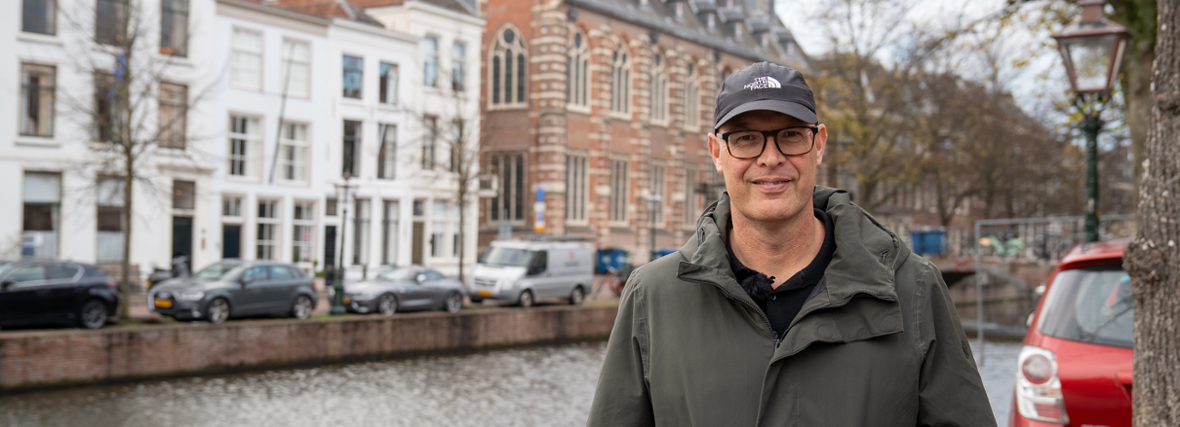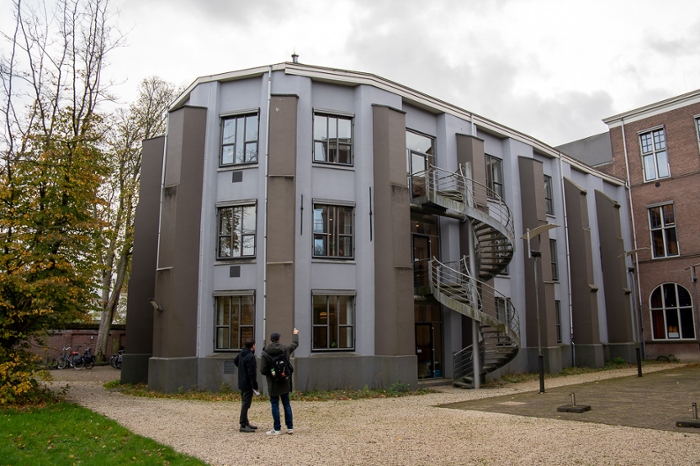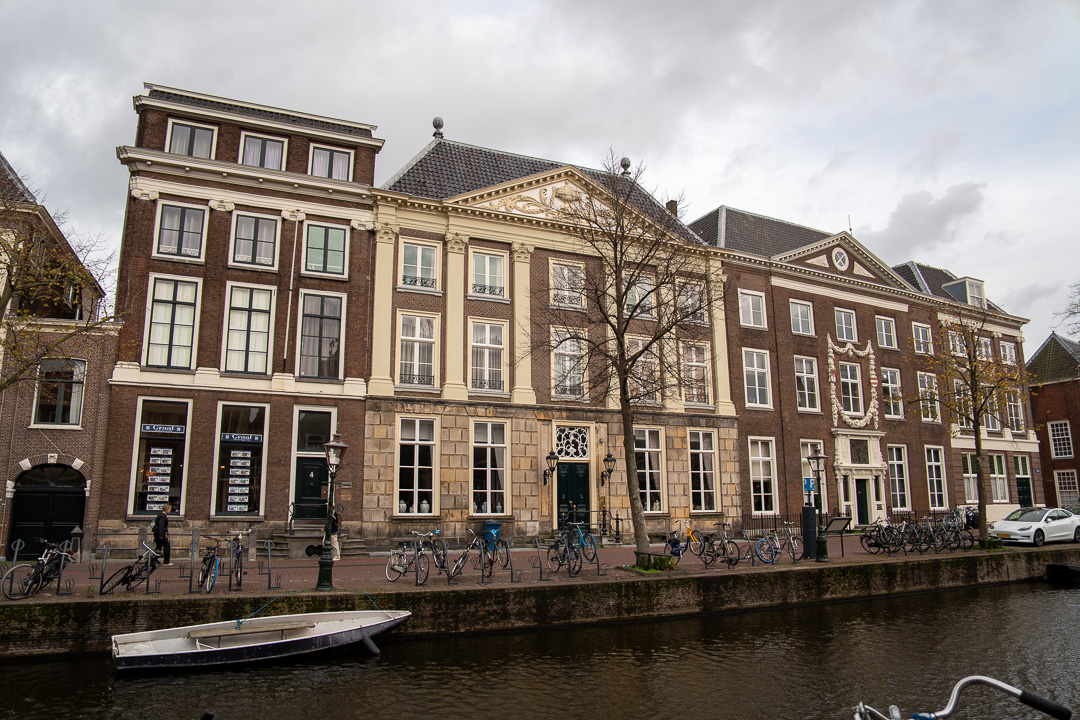
Alumnus Ruurd Kok seeks tangible traces of the past
Interview image: Rob Dorresteijn
After various jobs as an archaeologist, alumnus Ruurd Kok became a journalist. For the ‘Traces of Leiden University’ series, he explored the past of university buildings. ‘To me, history is interesting when you can touch it.’
Walking through the Oude UB building on Rapenburg, the past feels inescapable. Everywhere he looks, Kok spots details that reveal centuries of history. He points to a 17th-century tombstone embedded in the wall. While on either side of the corridor, HR staff work under a suspended ceiling, we head to a meeting room at the end. ‘See those curves? They show this was once a chapel.’
Medical students were taught here after the university moved into the building. ‘It was an anatomical theatre, where bodies were dissected in the winter.’

University history
Over the past year, Kok has delved into his alma mater’s history for the ‘Traces of Leiden University’ series in the Leidsch Dagblad newspaper. During a tour of university buildings, he points out tangible details that offer a glimpse of 450 years of university history.
‘Here at Rapenburg 6 was the Prytaneum in the 1950s,’ he says, stopping at an imposing building. ‘I had to ask university historian Pieter Slaman what that meant. It was the heart of the academic community, with a refectory, meeting rooms for student associations and the student and alumni administration.’

The building’s university links go back even further, right to the university’s foundation, Kok explained. ‘It used to be the Saint Barbara Convent. Behind that window is a medieval cellar. After the Catholics were driven out, it became the university’s first location in 1575. This is the birthplace of the oldest university in the Netherlands.’
Studying archaeology
As we walk to the next building, Kok recalls his time at university. He studied archaeology in the 1980s, then part of the Faculty of Arts at the time. ‘Back then, you could take six years to finish your studies. I made good use of that. As an archaeologist you obviously want to go on digs abroad.’
He has fond memories of fieldwork in Greece and Syria. ‘It was a small programme with a group of enthusiasts. We shared a passion for uncovering stories from the past. I’m still friends with people from those days.’
After graduating in 1988, Kok worked as an archaeologist for municipalities and the Province of Utrecht. ‘It sounds great to be provincial archaeologist, but you’re mainly a policy adviser. The province builds a road, digs a hole and you advise on what they need to consider.’
Missing ‘substance’, Kok moved to an archaeological consultancy, in Second World War archaeology. He also taught on the archaeology programme at Saxion University of Applied Sciences in Deventer. ‘Not all colleagues see Second World War archaeology as proper archaeology. There are lot of historical sources for that period. But that’s what attracted students.’

Writing stories
Eventually, Kok switched to freelancing, focusing on writing stories. ‘I’ve always written a lot, as a hobby in the evenings. At some point, you reach an age when you think: What do I really want?’ He now writes about ‘archaeology in the broadest sense of the word.’ ‘Looking for the past in buildings is also a form of archaeology. They’re tangible traces of the past.’
Through these traces he tells stories that get people to see the city differently. ‘There’s so much history to see without digging. Readers often tell me that after reading an article, they always think of the history of a spot as they cycle past. That’s why I do it.’ Alongside his work as freelance journalist, he still does advisory work as an archaeologist.
Natural sequel
The idea for the series came from the former Institute for Prehistory building on Breestraat. ‘It’s now a shop. There are so many buildings throughout the city with a university past.’ After a previous series on the traces of the Relief of Leiden, this was a natural sequel.

As we continue along Rapenburg, Kok points to the front door of the office of DUWO, the student housing association. On a small flap in the door are the words ‘material for research’. ‘At the start of the 20th century, this was the Institute for Tropical Medicine. You could post samples for examination through that flap.’ It’s one of the many traces the Faculty of Medicine has left throughout the city. ‘Once you know them, you can’t help but see them,’ Kok laughs.
At the end of the tour Kok shares some good news. An anthology of his series ‘Traces of Leiden University’ by Walburg Pers is expected next year.
-

‘There are so many buildings throughout the city with a university past.’ -

Rapenburg 6 was the Prytaneum in the 1950s, then the heart of the academic community. -

The first teaching hospital in Leiden opened at Pieterskerkhof in 1799.
